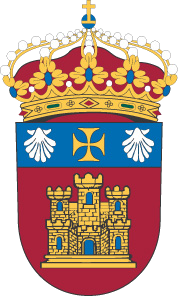Por favor, use este identificador para citar o enlazar este ítem: http://hdl.handle.net/10259/10021
Título
Viable system model structuring of success factors in software projects
Publicado en
International Journal of Managing Projects in Business. 2017, V. 10, n. 4, p. 897-919
Editorial
Emerald
Fecha de publicación
2017-09
ISSN
1753-8378
DOI
10.1108/IJMPB-08-2016-0068
Abstract
Purpose – The purpose of this paper is to identify the principal success factors of a software project
structured upon the basis of the viable system model (VSM).
Design/methodology/approach – To do so, an exploratory empirical analysis is conducted of a set of
software projects, in which the degree of compliance with the requirements set down by the VSM and the
success rating of their development are identified.
Findings – The results of the study indicate that the most influential factors in achieving global viability in a
software project are the local environment, the organizational units and the intelligent system. Building on those
factors, a mathematical prediction model is developed, reaching an accuracy of 63.16 percent in its predictions.
Research limitations/implications – The authors wish to point out that due to the number of projects
employed in the statistical analysis, the results have to be interpreted with caution and are of an
exploratory nature.
Practical implications – The authors seek to show that the VSM is an extremely useful tool for the
management of software projects and, by extension, projects of a general nature. The authors therefore
suggest that knowledge of VSM would be of incalculable value for managers wishing to manage projects
successfully and to survive in such a complex and rapidly changing environment as the software project
environment is. Its application allows us to diagnose and to detect the critical factors to achieve such success.
Social implications – In addition, the research seeks to increase the universality of VSM, contributing to a
better understanding of it and a better and greater formalization of it in favor of its acceptance and its
practical use, seeking in this way to palliate some critical principals related to its abstraction and limited
applicability and to increase its rigor and validity as an instrument for the diagnosis and the design of viable
organizations.
Originality/value – The novelty of this study is therefore principally found in the application of the VSM to
the organizational structure of a software project in such a way that it allows us to detect key factors in its
success. Besides, building on the validation of this proposal through the completion of a quantitative
empirical analysis, this study also offers a prediction mathematical model that relates key factors with the
success of the project.
Palabras clave
Cybernetics
Software project
Viable system model
Organizational cybernetics
Materia
Tecnología
Technology
Versión del editor
Collections











